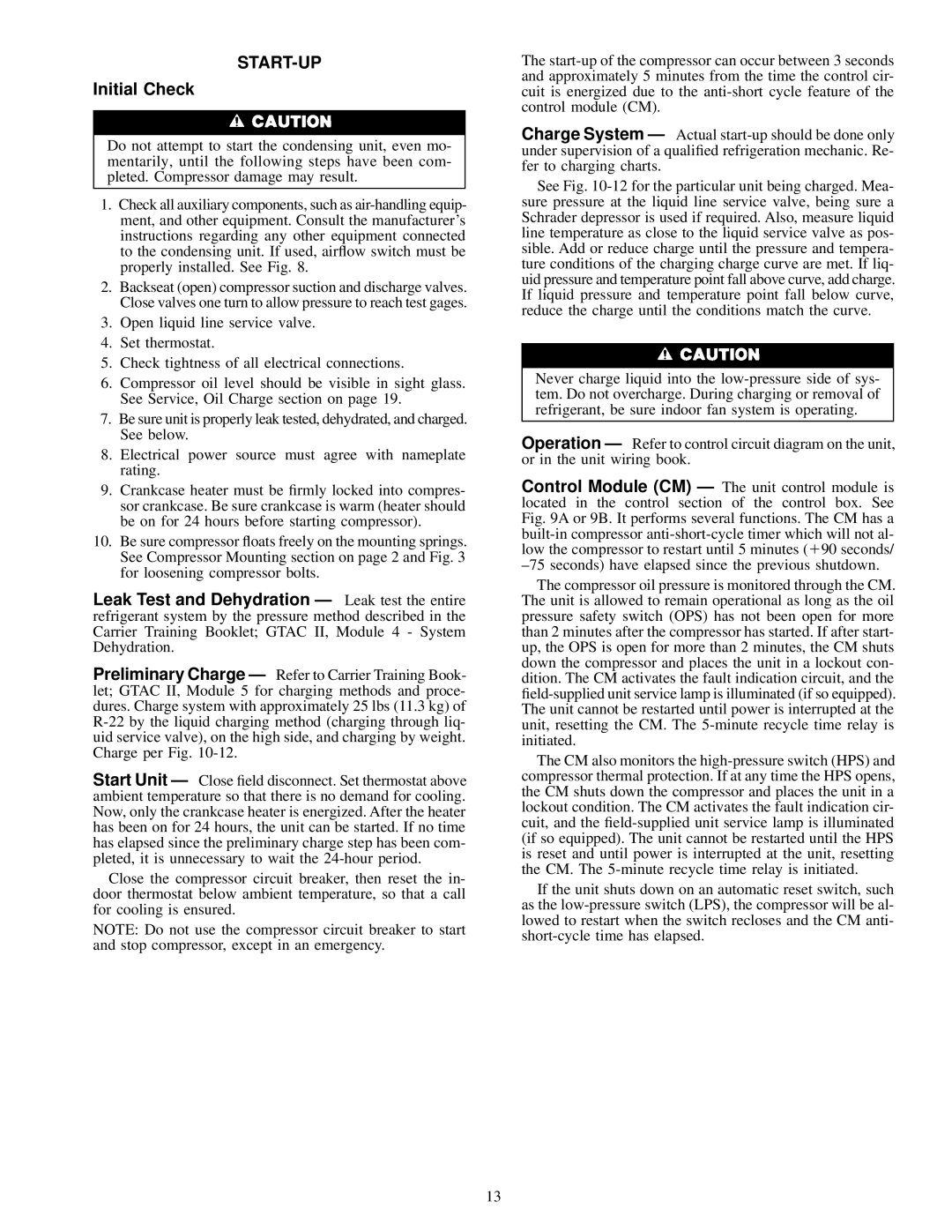
START-UP
Initial Check
Do not attempt to start the condensing unit, even mo- mentarily, until the following steps have been com- pleted. Compressor damage may result.
1.Check all auxiliary components, such as
2.Backseat (open) compressor suction and discharge valves. Close valves one turn to allow pressure to reach test gages.
3.Open liquid line service valve.
4.Set thermostat.
5.Check tightness of all electrical connections.
6.Compressor oil level should be visible in sight glass. See Service, Oil Charge section on page 19.
7.Be sure unit is properly leak tested, dehydrated, and charged. See below.
8.Electrical power source must agree with nameplate rating.
9.Crankcase heater must be ®rmly locked into compres- sor crankcase. Be sure crankcase is warm (heater should be on for 24 hours before starting compressor).
10.Be sure compressor ¯oats freely on the mounting springs. See Compressor Mounting section on page 2 and Fig. 3 for loosening compressor bolts.
Leak Test and Dehydration Ð Leak test the entire refrigerant system by the pressure method described in the Carrier Training Booklet; GTAC II, Module 4 - System Dehydration.
Preliminary Charge Ð Refer to Carrier Training Book- let; GTAC II, Module 5 for charging methods and proce- dures. Charge system with approximately 25 lbs (11.3 kg) of
Start Unit Ð Close ®eld disconnect. Set thermostat above ambient temperature so that there is no demand for cooling. Now, only the crankcase heater is energized. After the heater has been on for 24 hours, the unit can be started. If no time has elapsed since the preliminary charge step has been com- pleted, it is unnecessary to wait the
Close the compressor circuit breaker, then reset the in- door thermostat below ambient temperature, so that a call for cooling is ensured.
NOTE: Do not use the compressor circuit breaker to start and stop compressor, except in an emergency.
The
Charge System Ð Actual
See Fig.
Never charge liquid into the
Operation Ð Refer to control circuit diagram on the unit, or in the unit wiring book.
Control Module (CM) Ð The unit control module is located in the control section of the control box. See Fig. 9A or 9B. It performs several functions. The CM has a
The compressor oil pressure is monitored through the CM. The unit is allowed to remain operational as long as the oil pressure safety switch (OPS) has not been open for more than 2 minutes after the compressor has started. If after start- up, the OPS is open for more than 2 minutes, the CM shuts down the compressor and places the unit in a lockout con- dition. The CM activates the fault indication circuit, and the
The CM also monitors the
If the unit shuts down on an automatic reset switch, such as the
13
